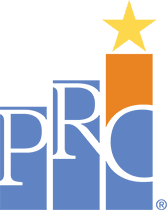Your ability to read and comprehend the intricacies of this blog and most of PRC’s publications may seem like a given. Much of our audience is college-educated, but many of you, especially those working with patients, regularly encounter illiterate adults and may not even know it. This is because half of US adults cannot read beyond an eighth-grade level. The illiteracy crisis as a whole brings its own host of social issues, but when narrowed down to health illiteracy—where just over one in ten Americans is proficient—it’s no wonder one of the world’s richest nations faces some of the worst barriers to healthcare.
Literacy for Few
The CDC defines health literacy as “the ability to obtain, process, and understand basic health information and services to make appropriate health decisions.” This spans all elements of health, from medical terms and basic human biology to the ability to follow instructions on a medicine bottle or understand your own health insurance. Our profound misunderstanding of how we pay for healthcare deeply impacts many facets of daily life, whether that be the decision to take ibuprofen and suffer through your shift or your hesitation to take time off work for an annual exam. More and more, research finds that these decisions are motivated by a growing class of people unable to gamble on the unpredictable costs of care.
Health literacy, which negatively impacts every racial and ethnic group in the US, isn’t the result of laziness or apathy. The complex nature of insurance and billing stacks against the user and creates yet another barrier to access. These obstacles have become so prevalent that they shape how consumers seek care.
Rising Cost, Sinking Patients
According to PRC’s 2019 National Consumer Study, frustrations with the unpredictable cost of care keep a growing number of would-be patients out of the hospital or doctor’s office entirely. Our research finds that 34% of respondents have chosen not to receive care at some point because the cost was simply too high. This is up in just two years; in 2017 only 29% of insured adults have delayed or forgone care because of cost. It is imperative that leaders of all types play their part in making health insurance concepts accessible to individuals regardless of health literacy. Too often it is unclear what the out-of-pocket cost will be to the patient and without a clear solution, Americans will continue to avoid seeking care, no matter the cost to our public health.
Frustratingly for those in the industry, our inability to understand how insurance and billing works comes from both sides of the hospital desk. Many of us have received multiple bills from one visit—one from the anesthesiologist, another from the laboratory, and so on and so on. Hospitals don’t send multiple bills because they like keeping the US Postal Service in business; rather it’s become so difficult to manage the billing from separate departments and care providers that the solution becomes to burden the patient with multiple bills. As this piles on the increasingly unhappy healthcare consumers, they begin to look elsewhere—notably social media—for alternatives.
These searches for alternative medicine can become dangerous, especially to those with low health literacy as they are fundamentally unable to separate the good advice from the bad. Patients also often know they aren’t supposed to turn to Dr. Google and may become reluctant to share these habits with their doctor, decreasing trust and leading to dangerous communication gaps.
Sacrificing Quality
In addition to avoiding doctors, PRC’s National Consumer Study found that 15% of respondents (up from 13% in 2017) invested time in contacting several clinics or care organizations to inquire about cost prior to receiving services. Unfortunately, patients aren’t typically able to get clear or easy answers about cost, as that’s dependent on insurance and how bills are coded. This lack of clear direction drives healthcare consumers out of traditional care settings and into an uncertain future.
Perhaps most astounding to healthcare leaders is that patients are often well aware of the risks in quality and yet continue to avoid doctors and hospitals; only 30% of respondents rate retail health clinics as excellent. Unfortunately, these alternative care options are able to promise transparent pricing and an increasing number of consumers chose cost over quality. There are no winners when patients forgo regular care or avoid their doctors, quality of care and community health both suffer as consumers flock to care options which are both convenient and affordable.
Until we are able to create insurance systems which provide information at an obtainable level of health literacy and billing systems which do not place the burden of consolidation and debt management on the patient, it’s likely that Americans will continue to take their best guess at what’s right for them as they walk out of hospitals and into any care alternative they can find.
Sources and Further Reading
Association Between Health Insurance Literacy and Avoidance of Health Care Services Owing to Cost
Hiding in plain sight: The adult literacy crisis
PRC National Health Survey: Health Literacy
Learn how PRC can help you champion DEI in your workplace with our DEI Pulse Studies!

